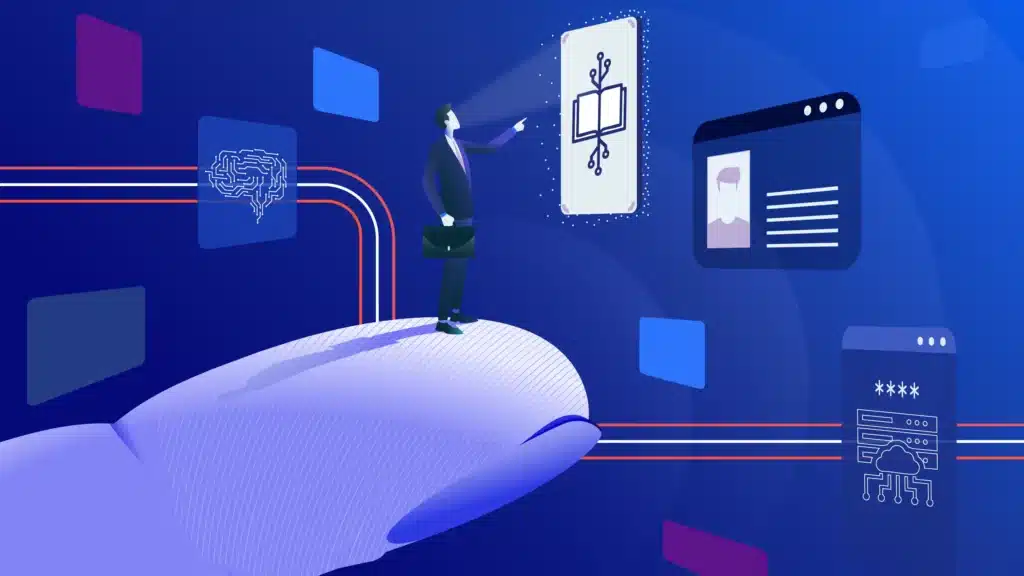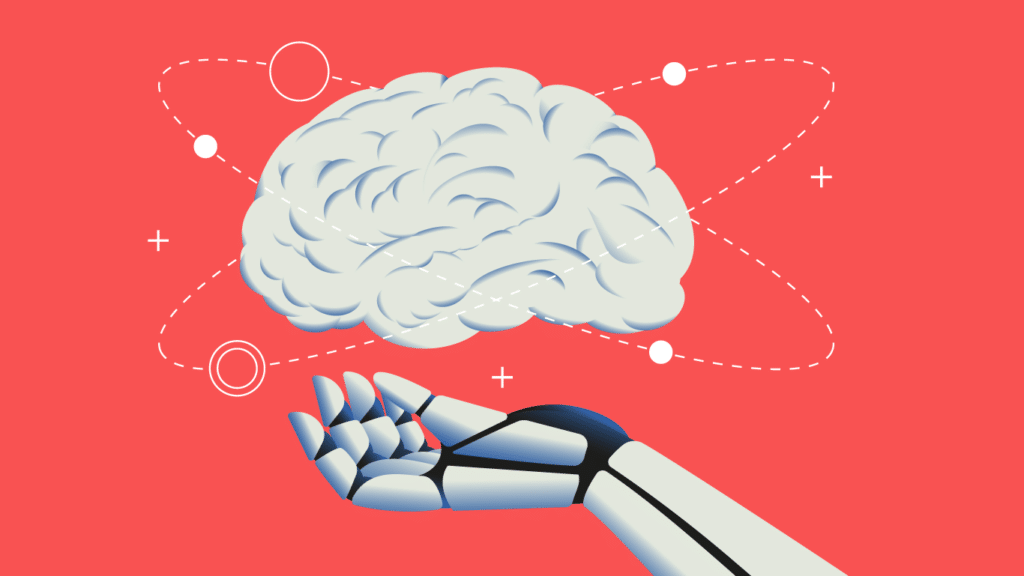55% of organizations are already in piloting or production mode, and Forrester predicts that 60% of generative AI skeptics will embrace the emerging technology in 2024, whether they realize it or not.
While we’re living in times of continuous innovation, few technological advancements have been able to break through to become a phenomenon the way generative AI has. It has captured the attention, imagination, and energy of businesses and consumers alike. From chatbot-powered customer support to creating hyper-personalized shopping experiences, this transformative technology holds the promise to unlock a higher level of customer engagement and satisfaction. Businesses are anxious to keep up with the Joneses, eager to capitalize on generative AI to stay ahead of and differentiate from the competition. In fact, 55% of organizations are already in piloting or production mode (Gartner), and Forrester predicts that 60% of generative AI skeptics will embrace the emerging technology in 2024, whether they realize it or not.
For those of us building, shaping, and defining products, we stand at the unique intersection of technology, business, and consumers. How might we harness the full potential of generative AI while staying ahead of the market?
It’s critical to remember how we have grappled with every new technological advancement in the past. Just as the advent of mobile applications, cloud computing, or machine learning created new horizons, real innovation came when the technologies were harnessed with human experience in mind. While generative AI as a technology is a uniquely potent innovation, how businesses will learn to apply it is no different. To succeed, we will need to place humans at the center of our strategy so the technology amplifies rather than overshadows their experiences with our products.
Generative AI is a uniquely potent innovation
Artificial intelligence (AI) is the capability of machines or algorithms to make decisions that traditionally require human intelligence. You probably already interact with this technology in your daily life – think of how Amazon recommends products you might be interested in or how Siri understands your voice.
Generative AI is a type of artificial intelligence that can generate new content like text, images, audio, and video. Generative AI can learn patterns and styles from enormous volumes of data in a large language model (LLM) to create original outputs that resemble human-made content. We are seeing generative AI write books, edit movies, and even create music. It is compelling us to question the potential and the boundaries of technological advancements.
Consumers understand and expect generative AI
Just a few years ago, artificial intelligence was relegated to the “back of the house,” a specific type of technology that contributed to the overall product goals while remaining imperceptible to most customers. With the advent of ChatGPT, products of every type across every industry are working to incorporate generative AI. As a result, we’re seeing the technology move to the “front of the house,” shaping and affecting customer experience. According to a poll conducted by Adobe, 72 percent of global consumers expect generative AI will improve their customer experiences, with eight out of ten millennial (80 percent) and Gen Z (83 percent) consumers expressing similar optimism.
This shift is not only indicative of the growing awareness among consumers but also a testament to their increasing expectations. They don’t just desire generative AI products in their products; they expect it. It’s table stakes. As a result, business leaders are being forced to respond rapidly to the technology and rising customer expectations.
Businesses are experimenting with generative AI
Businesses across industries are already investing, experimenting, and getting value from generative AI in various ways. They are using this technology to enhance the experience customers have with their products and services. Here are a few notable examples:
Virtual assistance
Chatbots and virtual assistants can provide instant customer assistance 24/7 to answer frequently asked questions and resolve common issues. Pariveda recently developed Brinks Home’s Help Center Assistant, a conversational chatbot that helps customer gets quick and easy answers for all their home security equipment and account-related questions any time of the day instead of having to call and wait for customer support or search through knowledge base articles. This convenient self-service feature also helps to reduce call center volume so customer support representatives can focus on helping customers with complex issues.
Personalized recommendations
Generative AI can suggest personalized product and service recommendations based on customer behavior patterns and preferences to help customers discover offerings they are likely to be interested in. For example, Spotify’s AI DJ uses generative AI to create personalized playlists based on listening habits, history, and preferences. Realtor.com’s Dream Home AI service allows users to create their dream home and then easily find similar homes on sale based on their vast set of real estate data and images.
Product customization
Generative AI-powered interactive tools can create bespoke product designs tailored to a customer’s individual taste and preferences. Stitch Fix, an online personal styling service, is experimenting with DALL-E2, an AI image generator, to create visualizations of an outfit based on customer preferences for color, fabric, and style.
Personalized marketing content
Marketing teams can leverage generative AI to automate content such as product descriptions, social media posts, and email marketing campaigns tailored to individual customer interests to be more relevant and engaging. Target is using generative AI to send customers email and SMS messages with personalized offers and discounts and has since seen a 20% increase in click-through rates.
Customer sentiment analysis
Generative AI can analyze, summarize, and extract insights from an extensive knowledge base. This can be particularly helpful in extracting valuable insights from customer reviews and feedback to identify areas of improvement. CarMax, a used vehicle retailer, leveraged generative AI to summarize vast sets of customer-written reviews into a synthetic review that combines all the content humans have written.
The common denominator in these early successes with generative AI is the human. While generative AI is still in its nascency, these businesses have found ways to advance using a discrete goal that works backward from the customer. By grounding their experimentation in customer needs, they have rapidly iterated and found solutions that provide value.
Bringing generative AI from lab to life
New technologies can often become a solution in search of a problem. Technologists and businesses are often quick to sense the potential but slow to imagine the possibilities. Experimentation allows early adopters to understand and push the boundaries of a new technology to better understand the art of the possible. However, by ensuring that technology addresses real human problems and improves the human experience, its chances of long-term success and adoption are higher.
The most effective approach for early adopters of generative AI is to integrate both strategies, pursuing rapid experimentation with humans at the center. By combining experimentation with a human focus, solutions can be developed iteratively – each cycle providing feedback to improve products and better understand generative AI while serving your customers.




















